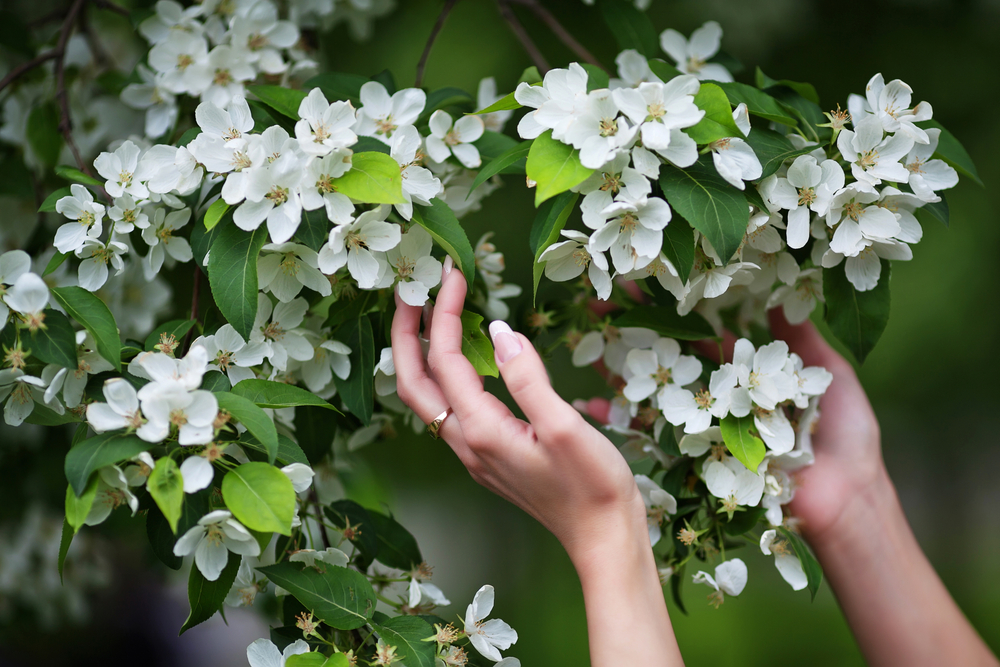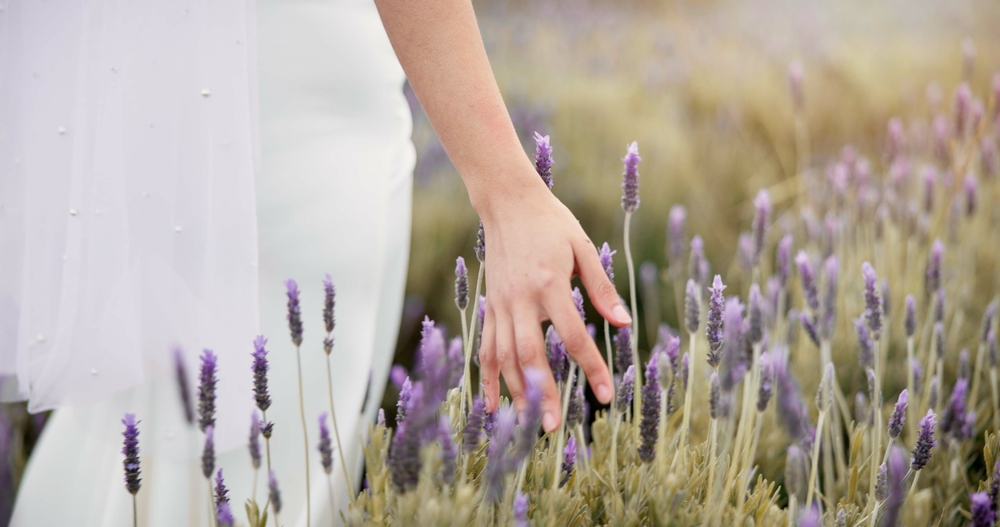A garden is much more than just a visual spectacle; it is a multi-sensory experience waiting to be discovered.
Imagine an outdoor space where the gentle sounds harmonise with the sweet scents of beautiful blooms. A space where you can enjoy igniting every sense. This is exactly what a sensory garden is. It is a carefully curated environment designed to engage all five senses, giving you a profound connection with nature.
By intentionally selecting plants and features that stimulate sight, smell, sound, touch, and even taste, we can create an outdoor haven that promotes relaxation, enhances wellbeing, and offers unique opportunities for engagement, particularly for those with sensory processing differences.
Below, gardening expert Fiona Jenkins at MyJobQuote.co.uk goes over a range of inspiring ideas to transform your garden into a rich and rewarding sensory landscape…
What is a Sensory Garden?
A sensory garden allows you to use all of your senses to appreciate the plants around you. Whether it’s the scent of lavender, the colour of tulips, the sound of grass in the wind, the feel of a downy Lamb’s ear or the taste of a wild strawberry. It helps to calm and relax your mind and body while enhancing your enjoyment of the space around you.
Most of us buy plants that are nice to look at or which produce a pleasing fragrance, but beyond that, we don’t consider our other senses. Unless you are purposefully looking for something that tastes good or adds movement to your garden design, you probably don’t consider your sense of taste or hearing when selecting plants. How they feel about the touch is probably way down the list, too. However, a sensory garden helps to engage all the five senses, and this has a positive impact on how we experience our outdoor space.
Sensory gardens provide an holistic approach to people with autism spectrum disorder. It can offer them the kind of experience they would not get in a regular garden and actively promotes physical activity, cognitive development and psychological wellbeing.

How to Create a Sensory Garden
Below is a list of ideas on how to create your own sensory garden at home:
Colour
Sight is the sense that is most stimulated when first walking into a garden, so colour plays an important role in designing a sensory space. Different colours evoke different responses. For example, yellow, red, and orange are warm colours that promote feelings of happiness, while blue, white, and purple have a more calming effect. If a sensory garden is intended for those who are visually impaired, then strong colours are needed. The choice of colours is not limited to the plants in the garden and can be applied to the hardscape features and furniture, too.
Texture
For people on the autism spectrum, texture can be a huge issue. Certain textures are unpleasant to the touch for some, while others may be soothing and calming. Visual texture is different, and in a garden, it is possible to introduce many different textured features, from plants to landscaping or decorative objects. Layering plants also creates a mixture of forms and shapes, which creates contrast and interest. The visually impaired obviously rely heavily on their sense of touch, so this is paramount for a sensory garden.
Quiet Corner
Those who have autism spectrum disorders often have difficulty with overstimulation, so having a quiet corner in a sensory garden offers a tranquil, safe space for them to retreat to. Planning a corner which is away from other parts of the garden and which feels like a haven from noise, movement and other people can be a welcome addition. Consider who will be using this part of the garden and add some gentle, soothing sounds, such as trickling water or plants that whisper in the breeze.
Consider Each Season
Remember to incorporate elements in a sensory garden for each season of the year. While bright colours are easy to produce in summer, think about how to provide them in autumn or winter. Plants with vivid autumnal foliage or winter berries can provide colour, while grasses offer movement and sound. The hardscaping of a garden is an excellent way to add colour, texture and sound. Garden ornaments, windchimes, water features and rockeries are year-round sources of stimulation for the senses.
Nighttime
Consider adding some plants to the sensory garden which emit their perfumes at night. Evening scented plants are perfect for stimulating the sense of smell so plant some honeysuckle, night phlox or evening primrose around your seating area. A firepit also stimulates the sense of smell, sound and sight when dusk falls and offers a pleasant opportunity to gather family and friends together. Toasting marshmallows over the flames incorporates the senses of taste and touch and creates lasting memories.
Sense-specific area
If you have a family member who is on the autism spectrum, they may have one particular sense that is prone to over or under-stimulation. This also works for visually impaired people who rely on their touch to explore and participate in the world around them. Creating a sense-specific area in your sensory garden which is personalised to their needs is a wonderful act of care, benefiting your loved one in a multitude of ways.

Which Plants are Best for Adding to a Sensory Garden?
There are several plants that are perfect additions to a sensory garden. Take a look at this list of some of the best ones below:
Sunflowers
Sunflowers will bring a smile to everyone’s face; they are just the happiest looking plant that you could introduce to your sensory garden. With their cheerful, bright yellow blooms, impressive height and tactile seeds, sunflowers provide a great sensory experience.
Tulips
Tulips are a beautiful sensory plant with their bright colours and simple but elegant blooms. With a diverse range of bold shades, they are capable of brightening up the dullest spring day. As they attract pollinators, they add to their sensory credentials by bringing bees into your garden too.
Lavender
Lavender is one of the most fragrant plants you can grow and is a great choice for a sensory garden. It produces a beautifully relaxing aroma as you brush past it, and its colourful flowers sway in the breeze make it visually stimulating. A favourite of bees, butterflies and hummingbird hawk moths, lavender is a sensory treat.
Lemon Scented Geranium
The foliage of the lemon scented geranium gives off a strong lemony citrus smell and its leaves have a wonderfully frilly outline. It is a popular plant for keeping insects at bay as they don’t like its scent but pollinators such as bees and butterflies love the pretty, delicate flowers.
Fountain Grass
For auditory stimulation, grasses are some of the best plants to have in your garden. The sound of the breeze rustling through fountain grass is a wonderful sensory experience. It has the added bonus of being visually stimulating too as it moves its spiky bristles in the wind.
Bamboo
Bamboo is a visually stunning plant with its beautiful canes but also provides auditory stimulation as its leaves rustle in the wind. This plant adds movement, height and drama to your sensory garden. Clumping types of bamboo can offer a scaled down version without sacrificing any of the appeal of this gorgeous plant.

Lamb’s Ear
Lamb’s ear gets its name from its soft, downy leaves which resemble the ear of a lamb. It is a pretty plant with silvery green foliage which is almost irresistible to touch and upright purple blooms which appear in summer.
Silver Sage
The silvery, woolly leaves of Salvia argentea are also difficult to resist with their ruffled look and layer of fine silver hairs. When this plant flowers, it produces tall stems holding white flowers which have an unusual, hooded appearance.
Chives
To round off your sensory garden, you need to include plants that have a great taste. Chives are a herb that have a wonderfully delicate taste and can be used in a wide variety of recipes. In addition, this variety of allium produces pretty purple or pink flowers as a visual treat.
Wild Strawberry
What could be better than having some wild strawberries in your garden? Although they are much smaller than cultivated varieties, they are a wonderful, sweet treat particularly for children. The foliage creates great ground cover and the flowers are small, white and delicate.
Final Thoughts
Creating a sensory garden is an act of mindful design. It is a deliberate effort to weave together elements that resonate with our fundamental ways of experiencing the world. From the calming whispers of bamboo to the cheery faces of sunflowers and the tempting sweetness of strawberries, each carefully chosen plant and feature contributes to a holistic and enriching environment.
Whether intended as a tranquil retreat, a stimulating space, or simply a way to deepen your appreciation of the natural world, a sensory garden offers a range of enduring benefits. It fosters a stronger connection with nature, encourages exploration, and provides a sanctuary where all senses are celebrated, leaving a lasting positive impact on our minds, bodies, and overall enjoyment of our outdoor spaces.
Amalfi at Home: Summer Styling Tips from an Interior Designer





